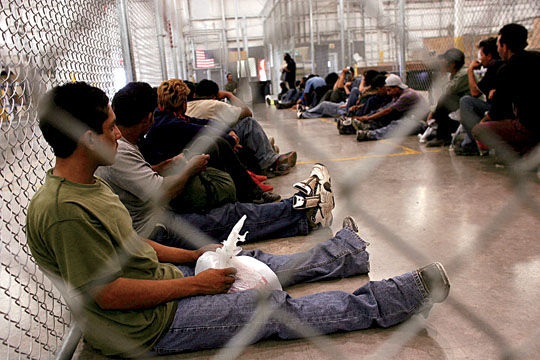 rise. As college students, we are all familiar with the common Mexican jokes and have developed such phrases as “Mexican stash” into our vocabulary. On our trip to Cape Town, one of the students was of Mexican decent. Another rude student made an inappropriate joke regarding his culture and background. I couldn’t believe that such racism was placed in a joke context and directed towards someone from Mexico. It goes to show how accepting and accustomed we really are to discrimination and racism.
rise. As college students, we are all familiar with the common Mexican jokes and have developed such phrases as “Mexican stash” into our vocabulary. On our trip to Cape Town, one of the students was of Mexican decent. Another rude student made an inappropriate joke regarding his culture and background. I couldn’t believe that such racism was placed in a joke context and directed towards someone from Mexico. It goes to show how accepting and accustomed we really are to discrimination and racism.  In the US, Mexican migrants are primarily concentrated in states such as California, Texas, Illinois, however; they are now following economic opportunities in other southern states such as Georgia and North Caroline in addition to some central states like Iowa and Nebraska. While I know little about Mexican immigrants, to my understanding; the majority of them are here for economic purposes rather than seeking a safe haven from danger that they may be in. Similarly, illegal immigrants are present in South Africa. Illegal immigrants are neither asylum seekers nor refugees. Rather, they majority of them are from neighboring countries primarily traveling for economic pursuit.
In the US, Mexican migrants are primarily concentrated in states such as California, Texas, Illinois, however; they are now following economic opportunities in other southern states such as Georgia and North Caroline in addition to some central states like Iowa and Nebraska. While I know little about Mexican immigrants, to my understanding; the majority of them are here for economic purposes rather than seeking a safe haven from danger that they may be in. Similarly, illegal immigrants are present in South Africa. Illegal immigrants are neither asylum seekers nor refugees. Rather, they majority of them are from neighboring countries primarily traveling for economic pursuit.
The views and beliefs that some Americans have against Mexicans (they usually don’t separate illegal vs. legal) are very similar to the views that some South Africans have regarding immigrants from all of Africa (regardless of illegal vs. legal). Even in the two pictures shown, individuals are often treated poorly in both countries, the top one showing an immigration center with captured Mexicans and the bottom one showing African immigrants. The typical American may view and treat refugees differently than illegal immigrants, but it is usually apparent if an individual is from Mexico or a refugee from a different part of the world. Some Americans provide assistance and contribute to the new life that refugees build – however, very few assist with the influx of individuals from Mexico. In contrast, South Africans cannot usually determine who is an economic migrant versus a refugee – and therefore Xenophobic attacks target all foreigners.
While America has always stood for being a country with diverse ethnic cultures that make it great, the fear is that those who have little and who suffer the most especially in the current economic downturn will begin to treat foreigners especially from Mexico more poorly. As a result frustrated individuals blame and look at Mexican workers as one of the contributing factors for their unemployment. Similarly, South Africans view all foreigners (including refugees) as individuals who are responsible for their lack of employment. The parallels between the two countries is remarkable regarding the overall views of illegal immigration - however in South Africa there is a growing problem with legal immigration attacks. There is a clear need for education regarding treatment of foreigners to prevent further attacks. Education is the only true answer.







